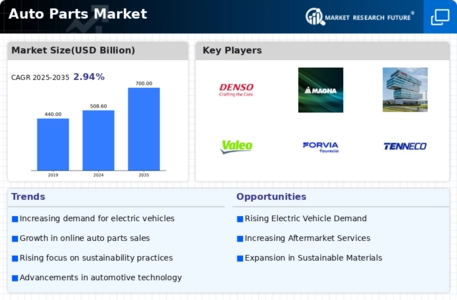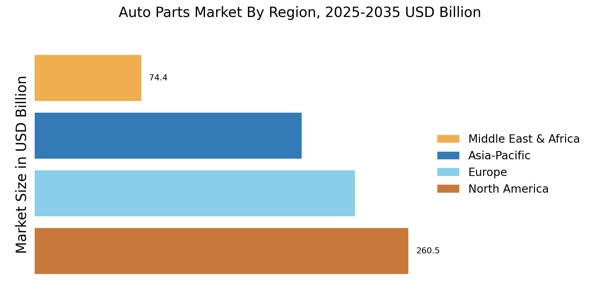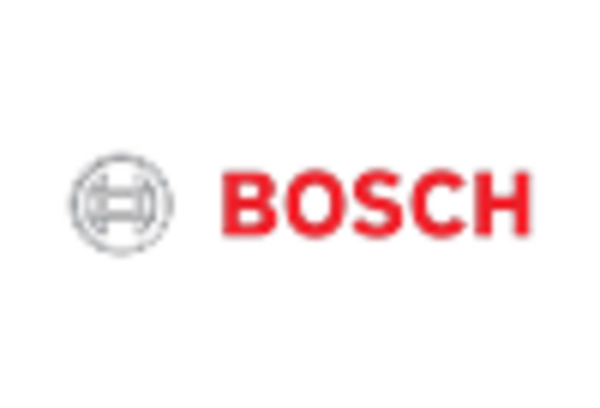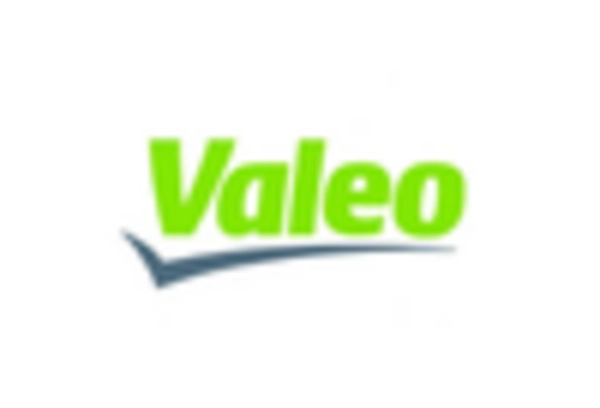The Auto Parts Market is characterized by intense competition due to the presence of numerous established players and emerging companies striving to secure their share of this lucrative industry. The market is driven by an increasing demand for vehicles across various regions, as well as advancements in automotive technology that necessitate the continual upgrading and replacement of auto parts.
As such, leading companies are investing heavily in research and development to enhance their product offerings, while also engaging in strategic partnerships, mergers, and acquisitions to consolidate their market positions.
The competitive landscape is further complicated by factors such as fluctuating raw material prices, regulatory changes, and shifting consumer preferences towards electric and hybrid vehicles. All these factors contribute to a dynamic and rapidly evolving market environment, compelling companies to adapt their strategies proactively to maintain competitive edge and market relevance.
Denso has established a significant presence in the Auto Parts Market, leveraging its strong emphasis on innovation and quality to stand out among competitors. The company excels in the production of a wide variety of components, including advanced electronics, heating and cooling systems, and powertrain products, which are crucial for both traditional and electric vehicles.
Denso's strengths lie in its extensive research and development capabilities that allow for the constant evolution of its product lines to meet shifting market demands. Additionally, Denso's global manufacturing footprint provides flexibility and efficiency in supply chain management, enabling the company to quickly respond to customer needs and address market opportunities.
Moreover, Denso's commitment to sustainability and eco-friendly practices further solidifies its reputation as a preferred supplier in the auto parts sector. Magna International plays a pivotal role in the Auto Parts Market, offering an extensive range of products and services that cater to various aspects of automobile manufacturing.
The company specializes in areas like body and chassis systems, exterior and interior components, and active driver assistance systems, making it a versatile player in the industry. Magna's robust market presence is supported by its strategic acquisitions and partnerships that enhance its product portfolio and technological capabilities.
The company's strengths lie in its broad global manufacturing network which allows for efficient production and distribution, as well as its commitment to innovation, focused on developing state-of-the-art solutions that align with contemporary automotive trends, such as electrification and automated driving.
Through these efforts, Magna International not only solidifies its competitive advantage but also fosters long-term relationships with leading automotive manufacturers, positioning itself as a key player in the ongoing evolution of the auto parts market globally.


















Leave a Comment